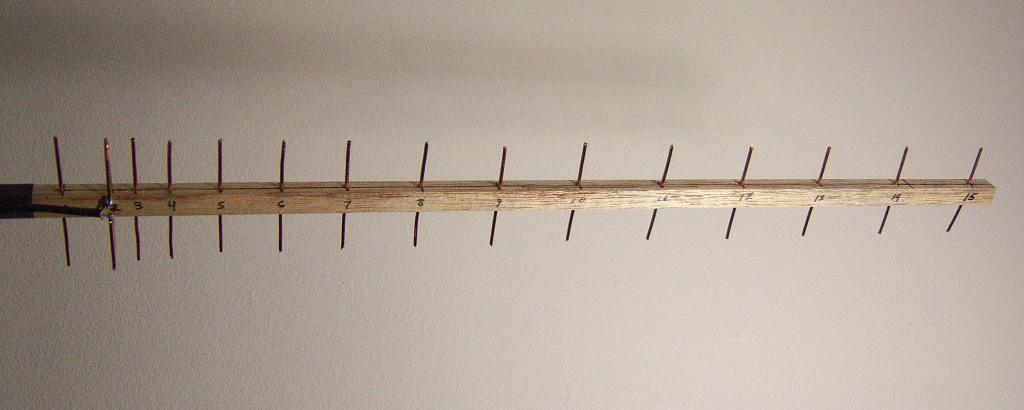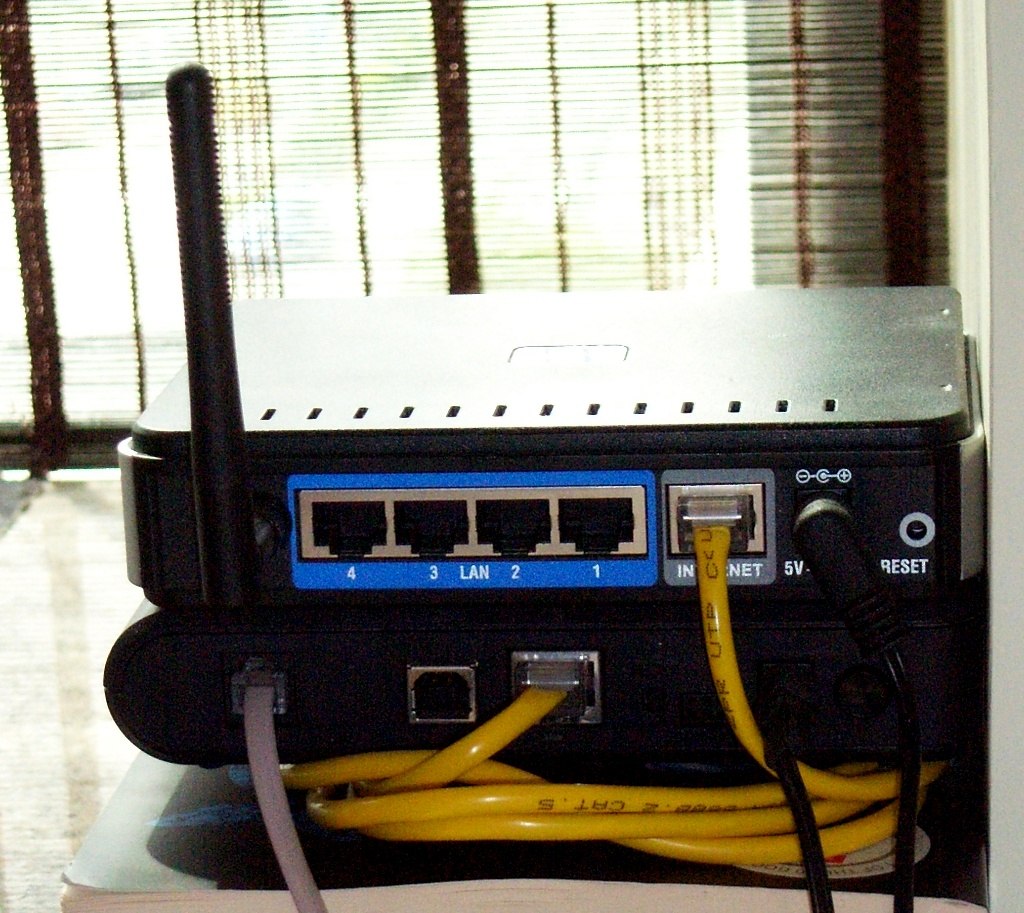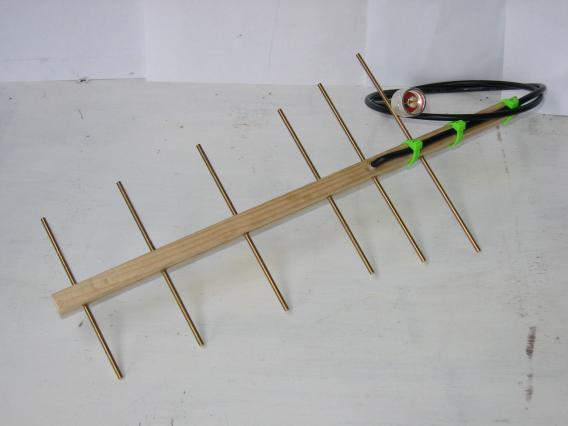Build Yagi Antenna Wifi
In today's fast-paced world, Internet access has become a critical link to finding products and services. Consumers need high-speed connections to utilize search engines, retailer sites, product review sites and other resources to make intelligent decisions on how to best spend the household budget. More people are beginning to rely on connections to access the Internet. Wi-Fi is available in many areas where cabled lines are impractical or unavailable.
It is a simple and fast way to provide Internet access across a specific area. On the flip side, the downfall of Wi-Fi is the signal can weaken quickly from competing signals as well as physical obstacles and other challenges. When Wi-Fi slows down to a crawl, frustrations mount and people begin to look for other alternatives. One popular solution is to build a Wi-Fi Yagi. This is a special antenna that can eliminate bottlenecks and speed up access.
Stronger Signals with Wi-Fi Yagi Antenna A allows Internet users to get stronger signals from existing sources. In addition, access points further away will now be within reach. This opens up a wide variety of opportunities, and is an ideal solution for some of the following situations:. Extending Internet access to a remote building or home.
Extending Internet access to another office building a long distance from the source. Extending Internet access across waterways to a remote island.
Providing connectivity when installing a cable is not an option. Material Needed for Wi-Fi Yagi Antenna This project is simple and can be completed in a few hours. A computer laser or inkjet printer will be needed to print a template. Other items needed included:. Scissors.
Mar 28, 2019 How to Build a Low Cost WiFi Antenna. Sometimes, your WiFi signal just doesn't reach where you want it to reach. You've seen wireless adapters at the store, but they can cost a lot more than you want to spend. We'll show you a way to build.
Homemade Wifi Antenna 5 Miles Range
Some light, flat wood pieces about the size of a stick used for ice cream bars. White glue and crazy glue. Metric ruler. Solid metal wires. Pliers Wi-Fi Yagi Antenna Construction Enter the term 'Yagi modeler' in a search engine to find a Java modeler applet which can generate a template for a 15-element Yagi. Free keygens downloads.
It is critical to get the correct scale. The template may be longer than a normal letter-size piece of paper, so use legal paper if possible, or print it in two parts and line them up. The lines of the template mark where the elements of the will be positioned. The elements are made from the stiff wire or paper clips.
Diy Yagi Wifi Antenna

2 Meter Yagi Plans
Template for W-Fi Yagi Antenna Make sure the print out is at the right scale. The sets of numbers along each element represent the length of the element and the distance from the beginning of the diagram to the element's position. Both measurements are in millimeters. Using a metric ruler, check one or two of the numbers to make sure the template is properly scaled. Trim the wires or paper clips with the pliers or a tool called a nibbler. They should be cut to match the element lengths on the template. Glue them to the template with the to keep them situated.
Instead of the yagi, I'm going to be taking bits and pieces of junk that I've picked up through the garage and closets over the past couple of days and turn them into a kickass portable WiFi Parabolic Antenna.Hopefully. I'm writing this tutorial as I actually build it so by the time I get done you'll all know the. Feb 28, 2017. Hackaday.io user HexHammer.Jez shows you how to build a tripole antenna to extend the range of Bluetooth (or anything in the 2.4GHz band). This antenna has a wider beam width than the Cantenna or Yagi-Uda, but HexHammer.Jez reports an LoS range of about 150 meters using an off-the-shelf USB.
Cut the ice cream bar sticks with scissors to create pieces that will fit in between each wire. Glue them to the template with white glue. Work from element labeled number 15 down to number two. Wi-Fi Yagi Antenna Elements The number two element on the is key - it is called the 'driven element.' It connects to the USB connection.
This element is not a straight wire like the others, but is a loop. A paper clip is perfect for this element. Place it so it loops around but so that the ends do not touch. Glue it down with super glue. Glue another layer of ice cream bar sticks with white glue reinforcement along the top. Once dry, tear away the template.
USB Connection for Wi-Fi Yagi Antenna Solder a USB connector or pigtail to the open ends of the looped number two 'driven' element. Plug the into your computer and check the reception. Move it around to locate the best position for maximum reception. There should be a considerable gain in reception over a standard or adapter. This is a simple project that will result in stronger Wi-Fi signals. One key is to make sure the template is scaled so the measurements are the same as shown on the printout. The distance between the elements should be accurate.
How to Buy Wi-Fi Yagi Antennas on eBay For those who need the materials to build a Yagi antenna or just want to purchase one, eBay is a great place to look. Just use the search bar located at the top of the page to find a specific item, such as 'Yagi antenna' or 'super glue,' then use the categories that appear to the left of the results to further filter down the search.
Remember to always look at the seller's rating and history before making a purchase.
The Yagi radio antenna is relatively simple to build, provided you learn a few design concepts. The Yagi, also known as a beam antenna, has a directional geometry that works best when pointed at a radio source.
It consists of a main antenna, called the driven element, and a set of auxiliary antennas, known as reflectors and directors, laid out in a flat plane. Each element is a thin metal pole whose length and spacing depends on the antenna’s main frequency. While simpler Yagis follow a predictable formula, more complex ones are hand-tuned by trial and error.
Select an FM (frequency modulation) radio frequency for which you want the Yagi antenna to receive. FM radio stations fall on odd multiples of 100 kilohertz between 88.1 and 108.1 megahertz. Calculate the radio wavelength in meters by dividing 300 by the frequency in megahertz. For example, 300 / 88.1 = 3.4 meters.Compute the driven element, director and reflector lengths by multiplying the wavelength by.473,.440 and.495 respectively. Taking the above example gives you 1.6, 1.5 and 1.68 meters.Compute the spacing between elements by multiplying the wavelength by.125.

Using the example of a 3.4-meter wavelength gives you a spacing of 42.5cm. Multiply the spacing by 2 and add an extra 10 cm to get a total length.Cut the slotted angle iron to the overall length you calculated in Step 3. Find the middle of the piece and mark the metal with the marker pen.
Use the measuring tape to find the two points from the middle having the spacing length you calculated in Step 3. Make marks at these points.Saw three pieces of aluminum bar to the lengths you calculated in Step 2.
Set the longest and shortest aside. The longest is the reflector and the shortest is the director. Find the center of the middle piece and cut it in half. Near one end of each half, drill a hole to accommodate a #8 screw.Slide the director rod through the holes in the angle iron near the mark you made at one end.

You will pass the rod at an angle through two holes so that the iron will support the rod. Make sure the rod is centered. Slide the reflector rod near the mark at the opposite end of the angle iron, centering it. Glue the rods in place with epoxy.Slide one of the two remaining half-rods near mark you made in the middle of the angle iron. The end of the rod with the drilled hole should protrude about an inch from the iron. Slide the other half-rod through an adjacent pair of holes near the first rod. The drilled end should protrude about an inch.Slip a machine screw through a ring connector.
Slip the screw through the drilled hole in one of the rods. Put a washer and nut on the screw and tighten. In the same way, attach a machine screw and ring connector to the other rod. Once you have the rods connected, glue them in place with epoxy.Strip about an inch of insulation from one end of the 300-ohm antenna wire and slit the remaining insulation about ten inches.
Place one end of the bare wire in an ring crimp connector and crimp the wire. Crimp the second bare wire in the other connector.Select a U-bolt that will slide sideways through the holes in the angle iron as the rods did. Place the U-bolt near the middle of the angle iron’s length to keep the antenna balanced. Mount the antenna to the antenna mast with the U-bolt. Connect the opposite end of the 300-ohm cable to a radio receiver.